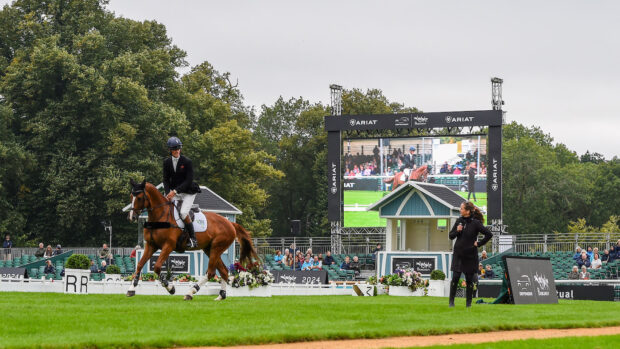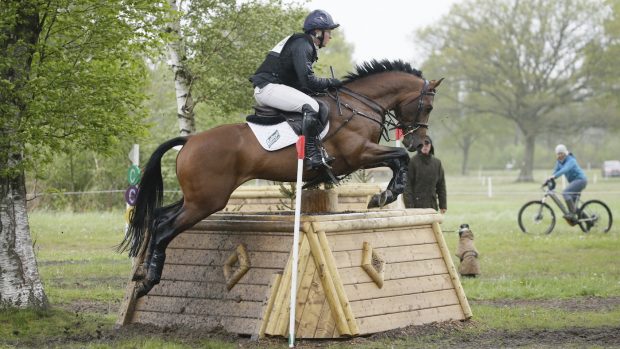In today's Horse & Hound magazine we broke the news that a clone of the brilliant event horse Tamarillo had been born.
Above is a video of Tomatillo (aka Tom) aged 6 weeks enjoy some turnout with his surrogate mother, Blondie.
After viewing this video Tamarillo’s former rider William Fox-Pitt said: “It’s spooky how like Tam he is. You see this little boy darting around while all the other horses are standing still — he’s a clown, just like Tam. Tam’s still like that at 21.”
5 things you might not know about Tomatillo
- He looks like the 100% genetic match to Tamarillo his makers claim he is. He even has a left-hind white sock — although apparently markings don’t necessarily replicate.
- The buxom surrogate mare, Blondie, was specifically chosen for her size as it was thought the extra room in the womb would give the best chance of the clone’s legs being straight and produce a larger foal.
- The foal’s farrier paid particular attention to keeping his feet absolutely level to ensure Tamarillo’s faults were not repeated — despite being one of the greatest eventers of his time, he wasn’t the straightest movers and dished.
- Tamarillo’s rider, William Fox-Pitt, says that it was “uncanny” seeing pictures of the cloned Badminton-Burghley winner.
- The dream for Tamarillo’s legion of admirers would be to see his brilliance repeated. William insists it has “never crossed his mind” that he might compete the clone.
The cloning process
Though Tamarillo’s connections had discussed cloning, the prohibitive cost deterred them.
The first horse clone, Promothea, was born 12 years ago, and the cost has decreased from the initial £250,000. By 2010, when William met up with Kathleen McNulty, who runs US cloning facility Replica Farm, the dream was back on the drawing board.
Kathleen proposed gathering a syndicate to share the $165,000 (£104,000) cost of the project. These stakeholders will earn a percentage of the clone’s future stud fee, but the Guinnesses will keep him and decide his future.
“They liked Tamarillo because of his compelling story,” says Kathleen of the anonymous shareholders. “He had everything it takes to win the Olympics, and then injured his stifle. This foal is phenomenal, and the shareholders are excited to be associated with such a famous horse.”
Replica Farm, Texas, has cloned more than 50 horses since 2007. In simplest terms, a tissue sample is taken from the neck and a nucleus from one of those cells is put into an unfertilised egg that has had the DNA removed. This is stimulated with a small electrical shock to develop it into an embryo. It is then transferred into a recipient mare and follows a normal gestation, with the foal being a 100% genetic match to the original.
The scientists make many embryos, which go into surrogates and are flushed out and graded before around three top-quality ones are inserted into three recipients. Of these it is rare that more than one will produce a live, healthy foal — although the client can purchase this at a small price if it happens.
Read the exclusive story of how Tamarillo came to be cloned, what the Guinnesses plans are for the foal and what William Fox-Pitt thinks of process in Horse & Hound magazine (19 September, 2013).


